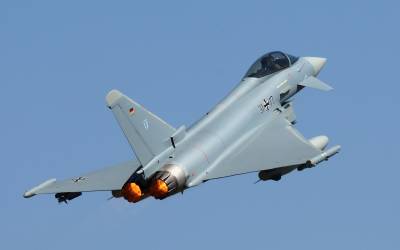KC-135: Old as the hills... (click to view full) DID's FOCUS articles cover major weapons acquisition programs - and no program is more important to the USAF than its aerial tanker fleet renewal. In January 2007, the big question was whether there would be a...
Forces – Marines Articles
F-35 Lightning: The Joint Strike Fighter Program
F-35B: off probation (click to view full) The $382 billion F-35 Joint Strike fighter program may well be the largest single global defense program in history. This major multinational program is intended to produce an "affordably stealthy" multi-role fighter that will...
1st Naval CMV-22B Arrived For East Coast | Norinco Started VN22 6×6 Production | Taiwan Plans To Deploy Hsiung Sheng Missiles
Americas The US Navy’s transition to the CMV-22B Osprey for its long-range and medium-lift aerial logistics missions took a significant step forward on April 5, with the arrival of the first tiltrotor aircraft assigned to the East Coast at Naval Station Norfolk,...
V-22 Osprey: The Multi-Year Buys, 2008-2021
(click to view full) In March 2008, the Bell Boeing Joint Project Office in Amarillo, TX received a $10.4 billion modification that converted the previous N00019-07-C-0001 advance acquisition contract to a fixed-price-incentive-fee, multi-year contract. The new...
Cochin Shipyard Inked Repair Agreement With USN | UK Delivered Land Rover Parts To Lebanon | South Korea Sent 2nd Spy Satellite To Space
Americas India’s Cochin Shipyard Limited has signed a maintenance and repair agreement with the US Navy. The third Master Shipyard Repair Agreement with an Indian company follows agreements with Larsen & Toubro in 2023 for Mazagon Dock and Kattupalli Port. The US...
Delivery of 1st CE-145C Vigilance to RCAF | Austal Started LCU Construction in Mobile | RAF Eurofighters Arrived in Romania
Americas The US Army Security Assistance Command (USASAC) has a news article on the delivery of the first Beechcraft King Air 350ER, designated CE-145C Vigilance in Canada, to the Royal Canadian Air Force (RCAF) on February 22nd. This marks the initial phase of a...
Eurofighter’s Future: Tranche 3, and Beyond
Italian Eurofighters (click to view full) The multi-national Eurofighter Typhoon has been described as the aerodynamic apotheosis of lessons learned from the twin engine "teen series" fighters that began with the F-14 and F-15, continued with the emergence of the...
Elbit Unveiled Air Keeper | Nigerian Army to Power Vehicles With Natural Gas | Taiwan Frontline Island On Alert
Americas Elbit Systems has unveiled the Air Keeper, a revolutionary airborne system designed to integrate Intelligence, Surveillance, Target Acquisition, and Reconnaissance (ISTAR) capabilities with Electronic Warfare (EW) functionalities on a single platform. The Air...
USN To Test Onboard Microwave Weapon in 2026 | SANDF Seeks To Modernize Samil Trucks | Indonesia Ordered 2 Scorpene Class Subs
Americas The US Navy plans to mount a high-powered microwave-based counter-air defense system prototype on one of its vessels in 2026. The Meteor will be the navy’s first high-powered microwave (HPM) project to counter targets such as drones and anti-ship missiles,...




